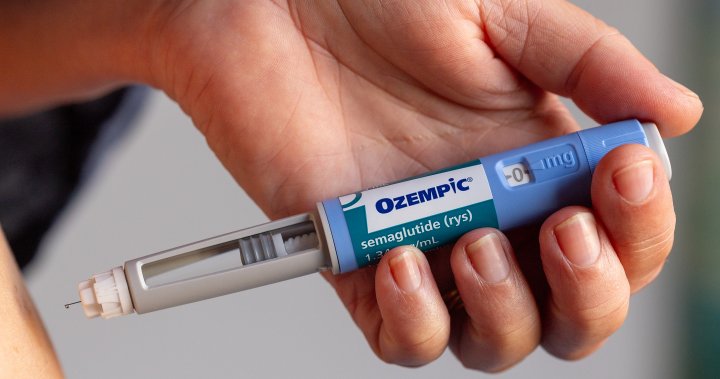A new classification trend is beginning to be on hold as a weight loss injection that will surge in popularity of Ozempic: microdoshing.
Instead of following standard dosing guidelines, some people are experimenting with small amounts of GLP-1 drugs, such as Ozempic, Wegovy, and Mounjaro. The reasons vary. From trying to stretch expensive prescriptions to avoiding the side effects associated with higher doses.
This off-label approach gained traction online. Podcasts, social media posts, and YouTube videos feature users who share their personal stories of pounds flowing at lower doses than recommended.
But it's here. The use of small doses for weight loss has not been rigorously studied. Because it is considered off-label, there is little clinical evidence to suggest that this type of do-it-yourself administration is in fact effective or anecdotal.
So, can people really lose weight with unprescribed doses?

“It's not impossible, but there's no evidence,” said Hertzel Gerstein, a medical professor at McMaster University and Hamilton Health Sciences and a diabetes expert.
“But the lack of evidence doesn't mean it doesn't work. That means no one really researches it in a systematic way. And you can always find anecdotes online, on social media. But the problem is that placebo works with anecdotes, right?”
Gerstein focused on one study published in Diabetes Care in March 2025, suggesting that microdegeneration may have some benefits for diabetic patients. However, this study revealed that: there is still no strong clinical evidence to back it up. Microdoshing is considered off-label and is not officially supported by drug manufacturers, so it should only be done with caution, under the guidance of a medical professional.
Novo Nordisk, the maker of Ozempic, told Global News in an email Monday that the drug is a prescription-only drug used in the Canadian-approved product monograph.
“Novo Nordisk does not recommend using Ozempic at doses or frequencies that deviate from the dosage instructions approved in the product monograph,” a spokesperson told Global News.
In Canada, Ozempic is officially approved for the management of type 2 diabetes. It is also used off-label for weight loss. Its sister drug, Wegovy, contains high doses of the same active ingredient, semaglutide – is approved for chronic weight management in adults with obesity or weight-related health problems.

Get weekly health news
Receive the latest medical news and health information provided every Sunday.
Semaglutide drugs help to regulate blood glucose by mimicking a hormone called GLP-1. This hormone increases the production of insulin and slows down digestion and hunger suppression. This is a combination that leads to increased use as a weight loss aid.
Due to off-label use of Ozempic, many insurance companies may not cover weekly injections. This costs between $200 and $500 a month in Canada.
And, like many medications, ozempic can cause side effects, such as nausea, vomiting, diarrhea, stomach pain, headache, dizziness, and in some cases known as gastropia.
“This could be a situation where, for some reason, some of the fixed doses you have, you might want to use it a little more or a little less,” says Gerstein.
So the cost and side effects may be why people are experimenting with lower doses, he said.

Is Microdosing Ozempic dangerous?
In conclusion, he said there are no formal guidelines for microexhaustion of these drugs, and there is no solid data on how safe it is or whether it is effective or not. It's an experimental approach, and I just don't know enough yet.
For example, when you prescribe a GLP-1 drug like Ozempic, it usually starts at the lowest dose, usually 0.25 milligrams. Once your body handles it well, your doctor will gradually increase to 0.5 milligrams depending on your response, and ultimately even higher.
Trend now

Stepfather asks for an expanded search if they don't have two Nova Scotia children

14 children arrested in the UK after the death of a boy in an industrial fire
Doctors will prescribe this amount as it is based on clinical tests performed by drug manufacturers and make sure the dose is effective and safe for most patients.
“The dosages sold are those that work based on clinical research,” explained Gerstein.
Gerstein emphasized that positive outcomes could be a placebo effect, as there is no evidence to support using an amount that uses less than a given dose, such as 0.25 milligrams.

“Microdrugs within known therapeutic areas where drugs have been proven to work is one thing,” he said. “For example, some people see better results when one milligram works for them and increase it to 1.5 milligrams. That's still within the scope of research.
“However, it microdegenerates under its scope of treatment. It's not impossible, but it's unlikely to be effective. The only problem is that there is no evidence, it's anecdotes and speculation.”
Gerstein added that it is worth noting that because much of the microdislocation talk focuses on weight loss, it is important to note that semaglutide-induced weight loss is dose-dependent. The more you take (within the scope of the reason), the fewer people tend to be.
For example, one milligram usually leads to more weight loss than 0.5, while Wegovy, which is 2.4 milligrams, tends to produce even better results.
“Can someone lose a lot of weight with 0.1 milligrams? Is it basically a microdose? Or 0.25 milligrams? Anything is possible, but at this point it's a purely untested hypothesis.”
Until microdegeneration is rigorously tested in a clinical setting, Gerstein strongly recommends discussing potential benefits with a physician before trying it out.
“As a doctor, if someone says they want to try microdosing, “There's no evidence that it works. Why not start with a standard dosage? If you tolerate it well, I recommend sticking to it,” he explained.
He also points out that the cost of microdating can be a concern, as it is not clear whether practices are effective.
“My feelings are that you might end up paying for something you're not paying anything…other than the placebo effect,” he said.


